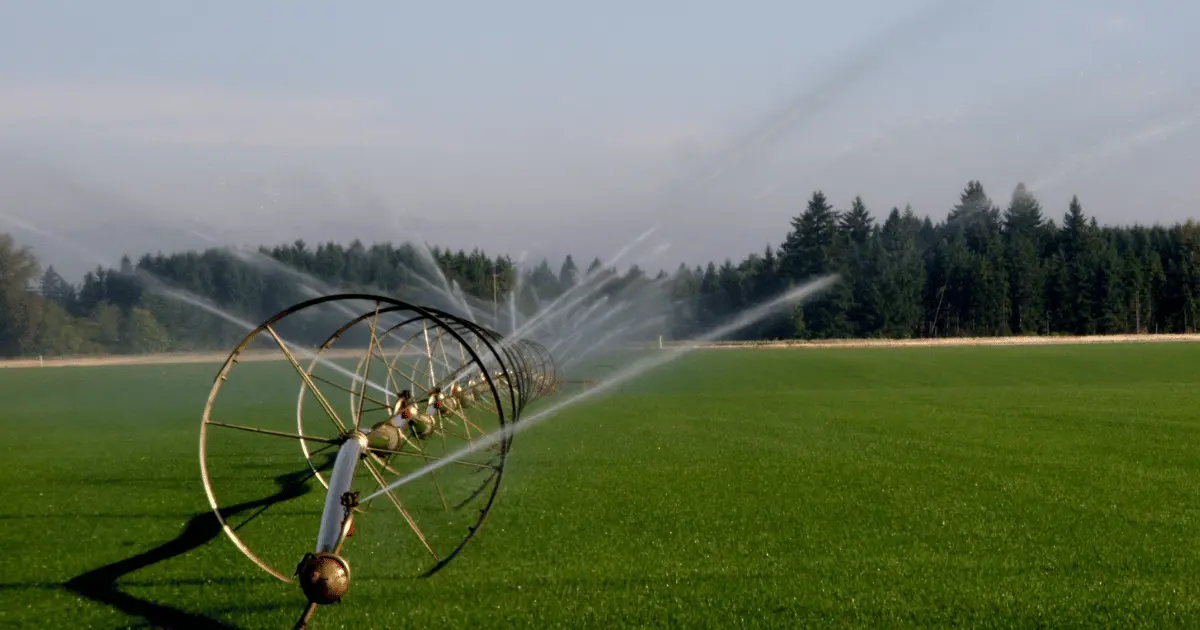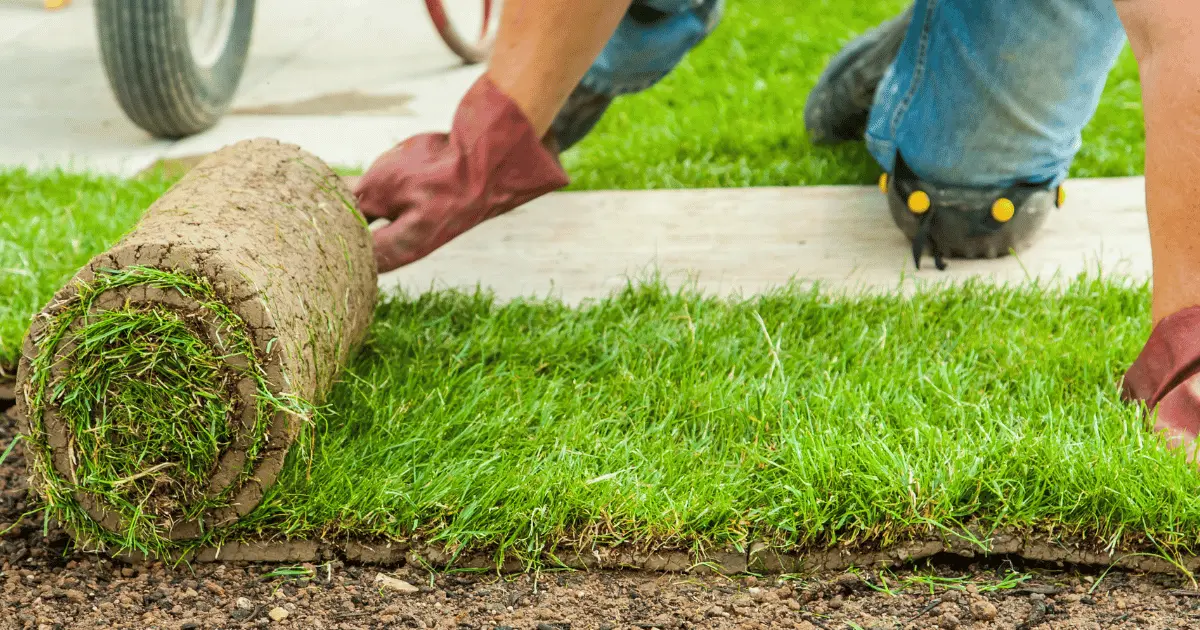Sod is a quick and easy replacement for your existing lawn. Once your new sod is installed, you must pay close attention to how frequently you water it. To ensure that the roots of your new grass grow firmly, irrigate it thoroughly. I will assist you with creating a strategy to keep track of the most crucial aspect of lawn care. I had to make sure I gave my lawn the attention it needed to develop with that sort of investment on the line. It only needs water. This article holds some guidelines for watering your New Sod.
How Much to Water My New Sod

Watering your new lawn twice daily for roughly 20 minutes at a time is required for at least two months. This should be sufficient to water your lawn six inches per cycle thoroughly. The optimum time to water your grass is in the early morning and late afternoon, but be sure to modify your routine if it rains. Avoid watering your grass in the evening because doing so invites bugs and diseases or fungi.
Always keep an eye out for symptoms of dryness on your new lawn, and spot water in areas where your sprinklers may not be reaching with a handheld sprayer. It’s crucial to be careful in your watering during the first 14 weeks after your grass is newly placed because this is the time when it requires water the most. Avoid your lawn for the first two weeks or after mowing for the first time. It will lessen soil compaction and stress, allowing your roots to take root.
How Often To Water My Sod
The most crucial period is the first two weeks following installation. One forgotten watering combined with the usual light and heat can cause the individual sod pieces to separate from one another, resulting in a patchy lawn.
Dead zones result from insufficient irrigation and usually appear in the yard’s sunniest and most sloping areas. A regular 14-day watering regimen might help you avoid these typical blunders.
The following steps to take in the first two weeks of installation:
Week 1
After installation, apply a quarter-inch of water twice daily for the first week. Water first between 4 and 10 in the morning, then once more in the late afternoon or early evening. By providing the grass with constant moisture, you may encourage it to grow new feeder roots, strengthening and hardening the lawn.
Peel back the corners of a few sod pieces towards the end of the week and check for the short, white roots that should be beginning to grow into the ground below.
Week 2
Apply one inch of water every day during the second week. Continue watering in the morning, but be aware that it will take twice as long. Young feeder roots will “chase” the moisture more profoundly into the soil if more water is applied and allowed to dry out later in the day. Additionally, by urging the grass to seek deeper water, this modification makes the grass more tolerant of drought. The sod pieces should knit together by the end of the second week, and you shouldn’t be able to pull up corners.
After The First Two Weeks
Once the margins of your new sod have grown together and deep feeder roots have been created, switch to a more typical lawn watering schedule. Ensure your grass receives 1.5 inches of water per week from irrigation and rain for the healthiest growth and beauty. Apply a half-inch of water to the lawn three times per week if there is no sign of rain.
Procedure Before New Sod Installation

You should have performed some fundamental ground preparation steps before laying your sod. All sprinkler heads must be identified for the installers, whether you are doing it yourself or hiring a professional, with paint, irrigation flags, or wooden stakes. Use ground paint to indicate where to trim the sod if a mow curb or other physical barrier does not bind your lawn area. Before you lay the turfgrass sod, we strongly advise applying a starter fertilizer to the soil. The following is the procedure:
- Wet The Soil Before Laying Sod
Dry, scorching, bare soil in the sun might burn the roots. It is true if starting fertilizer and lime are on the soil’s surface. You can prevent burning the roots by thoroughly tilling fertilizer and lime into the top three inches of soil and soaking the prepared soil before installation.
- Water The New Sod ASAP
Early, thorough watering encourages improved root-to-soil contact, removes air pockets, and, most significantly, builds a moisture reserve that keeps the sod from drying out.
Watering Your New Sod
Your new sod lawn can be quickly established, but it needs good water and a good watering schedule. When it arrives, you should lay the sod on your land. Install the sod as soon as possible if the temperature exceeds 95 degrees, and water the entire area evenly. On your initial watering, use a lot of water. After the initial irrigation, the area should have 3–4 inches of water.
Because the earth is dry when we initially apply the water, the first watering must be extensive. Initial, thorough watering is required to saturate the soil thoroughly. Once the earth has soaked up water beneath it, maintaining moisture in the soil/sod requires periodic, lighter watering.
Irrigation System
A hose timer is a perfect solution if you do not have an in-ground irrigation system and find it annoying to reposition your sprinkler every 20 to 30 minutes or live where watering is severely regulated. They frequently have numerous zones, allowing you to use several sprinklers at once, and they will turn off after the specified watering time. Even a few Wi-Fi choices are available, allowing you to operate your hose valve wherever and whenever you like.
Overwatering Signs
Although your new lawn needs a lot of water, you should stay moderate. Too much water can stop root growth and cause rot. You should stop watering your grass and give it some time to dry out if it seems to be holding water or if there are signs of puddles. You’ve gone too far and need to modify your watering schedule to allow your lawn some time to drain. You’ve gone too far if the ground feels spongy or water squeezes up when you walk on it.
As a warning sign of overwatering, look for any dark brown discolorations or indications of rotting grass. Thankfully, turfgrass has been bred to be resilient. Your grass will quickly recover if you modify your watering schedule at the first indication of overwatering or underwatering.
Underwatering Signs
It’s a solid indication that you’re not watering enough if you notice significant gaps growing between your rows of sod or if the corners are pulling up. Shrinkage is a sign that your new lawn is drying out. If you’re getting bad results in one location, your sprinklers are probably not achieving their target and need to be adjusted. Look for any greyish patches on the grass or locations that aren’t healing after being trodden. These are early warning signs that your grass needs more water.
